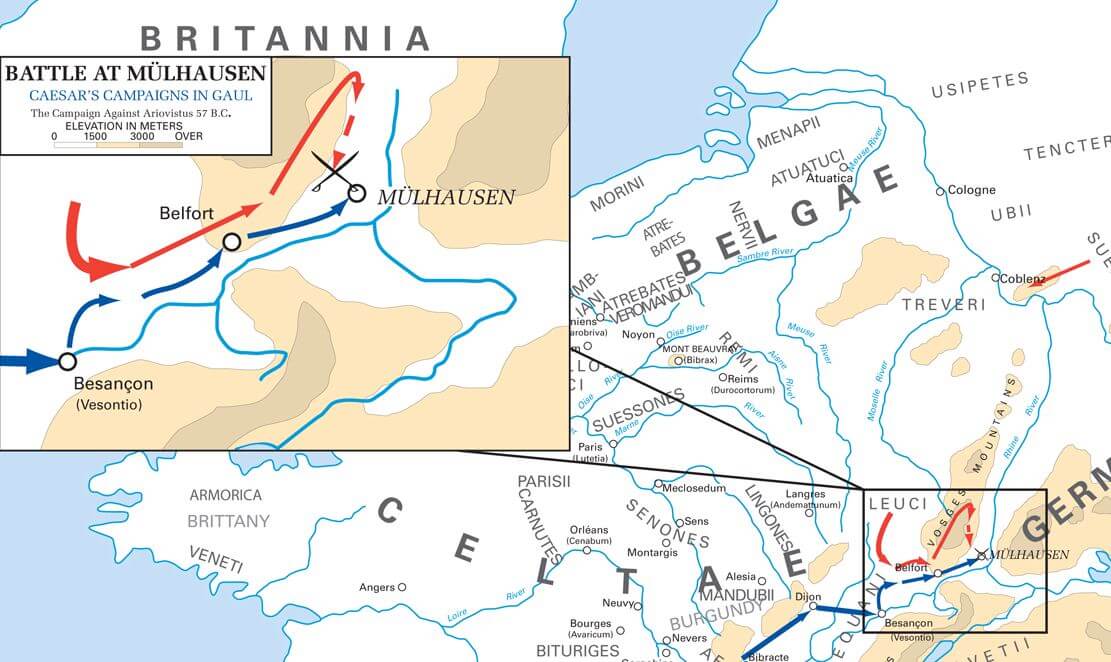Following on from our mini political discourse we see that Caesar had rapidly marched thru Northern Italy, securing city after city,mostly bloodlessly against the Senatorial forces. This enhanced his popularity and opened levy raising opportunities. Pompey and much of the Senate abandoned Rome, caught flat footed as it was, with Legions dispersed around Italy, Pompey had little choice. Rome could easily be recaptured once Pompey had drawn Caesar to another theatre for battle due to his naval capabilities. Once in Asculum, forces deserted from the Pompeian army and fled ahead of Caesar. It was to be at Corfinium that a stand by Domitius Ahenorbarbus and Vibullius Rufus could be made with 30+ cohorts between them.
The battle commentary:
Caesar was marching to Corfinium with 2 Legions. He dispatched his advanced guard to deal with the forces of Pompey (5 cohorts) who were attempting to destroy the bridge 3 miles out of town on the River Aternus.
The Veteran Cohorts really had no trouble dispatching the Recruit level Pompeian cohorts. It was unfortunate for the XVI that the strongest unit was in the center. As he and the units across the river were in command dire straits from the get go. Forces that are so similar really have the potential to become batles of attrition without some sort of ability to gain a flank. This is not to be the case today.
As the XVI attempt to counter their already high level of cohesion hits mitigates any benefits of flank or size advantage. They literally bounce off of the tough 8 Troop Quality rated cohort from the XIII Cohort #1.
At this point the Tribune for the XIII has dispatched his men back the bridge and seeks to ensure that no wayward last minute attack foils his complete victory. Caesars troops by using their ZOCS adroitly, are able to lock up the situation tightly.
What happened at Corfinium? The leadership sent word that they needed support as they were being laid to siege. Pompey advised a hasty retreat.
Meanwhile the Pompeian troops smelt a rat and negotiated themselves to surrender to Caesar. Who promptly recruited them to his cause. Prominent citizens and the Legions leaders were released.
This small conflict driven by Empire shaking actions was a key example of Caesar willingness to take on calculated risk and demonstrated the ability to inflict harm on the enemy by using time and surprise to his advantage.
By driving into Italy with one Legion, stymieing his opponents ability to raise troops and seizing political and economic benefit via the near bloodless capture of Rome was stunning. It was also a stroke that could not be countered by Pompey easily, not anticipated. Pompey reacted quickly but could not and would not risk a battle loss to Caesar on Roman soil.
The resultant actions lead us to the first battle of the 2nd Civil War.
Now we must of course first return to our chronological look at the development of our two fine leaders.
Next, the conclusion to Baetis River, the ambush at Langobritae and The Battle of Lauron 76.B.C, where Pompey receives his first lesson.
Part 1: http://wp.me/p3euWn-75VzQ0

One thought on “A Bridge To Near “iacta alea est” [PVC] part2”
Comments are closed.